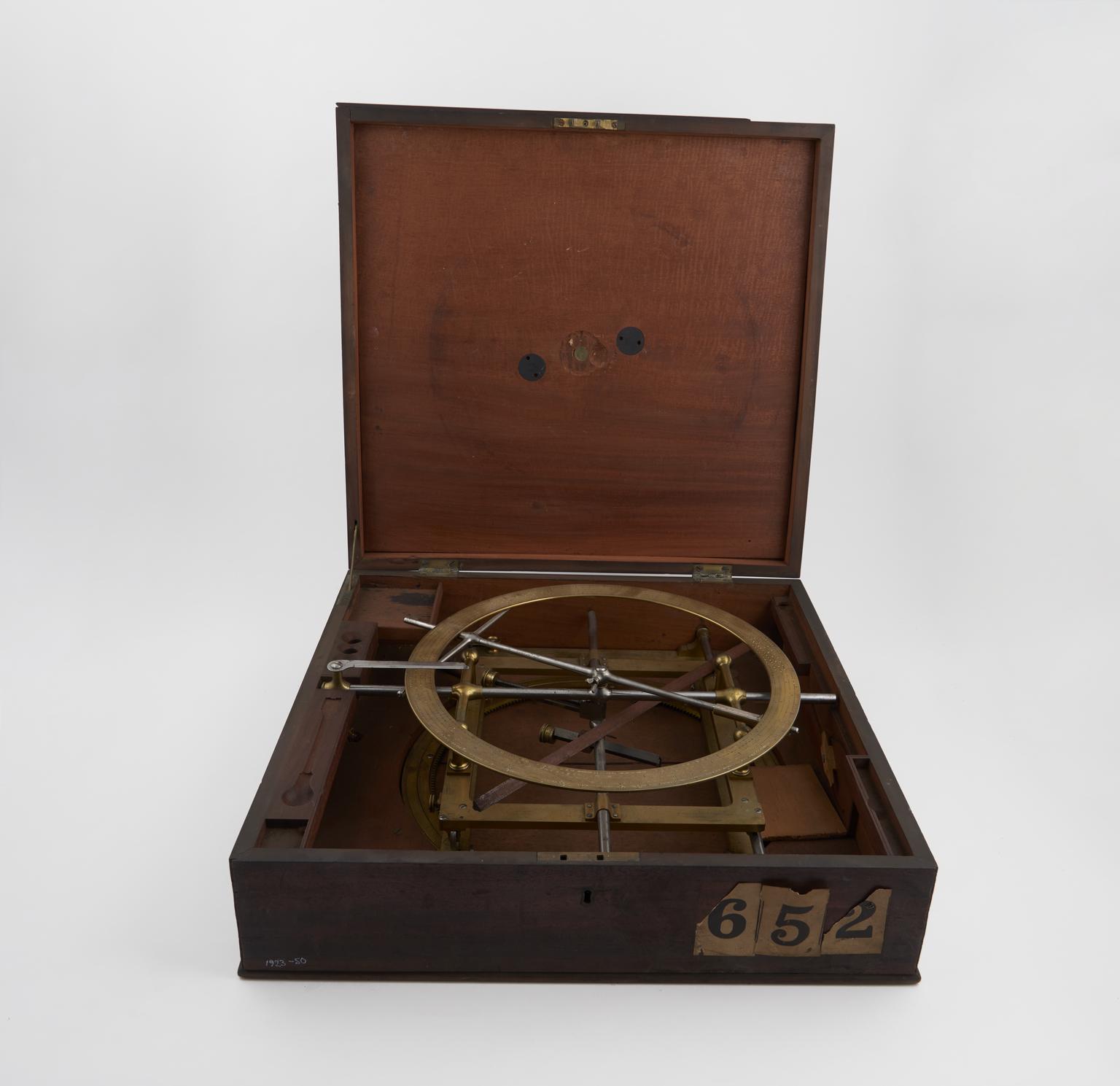
Accessory case and parts for Clement's Ellipsograph
- Object Number:
- 1923-50 Pt1
- type:
- instrument case

Clement's Ellipsograph in mahogany case (16 3/4" x 16" x 4 7/8") (no key); with accessories including key, screwdriver, pen, engraving point etc. Engraved.-"Joseph Clement Invenit, Holtzapffel and Deyerlein, London, Fecerunt"
In 1818 Joseph Clement presented his design of an ellipsograph to the Society of Arts and won the gold medal. As it performed several other functions besides drawing ellipses, it was more complex than the first English ellipsograph designed by John Farey eight years earlier. In 1817 Clement started his own shop in South London where he would work until his death. It was whilst here that he would develop this machine that allowed engineers to draw ellipses and circles quickly and with precision for machine parts such as the teeth of cogwheels and the threads of screws. With such reputation and experience for precision instruments, Clement, who has also been called ‘the first computer engineer’, was hired to build Charles Babbage’s Difference Engine, a calculating machine that is considered to be a mechanical forerunner of the modern computer.

